Digital learning trends? It’s about Mobile, Gaming and CX

21 June 2017: Mary Meeker, from Kleiner Perkins, has just released her Internet trends report for 2017. There are 355 slides in this pack, mostly for those concerned with digital sales. There are also some beams of light for the emerging future of digital learning. My take-aways from this eclectic and compelling overview are that, for education, it’s all about mobile, gaming and the quality of customer service.
Firstly, though, what’s Internet access looking like across the world? There are now 3.4 billion Internet users, which is 46% of the world’s population. But because an estimated 16% of people do not have access to electricity, this is more like 60%. Not surprisingly, the expansion rate is beginning to slow, as Mary’s graph shows:
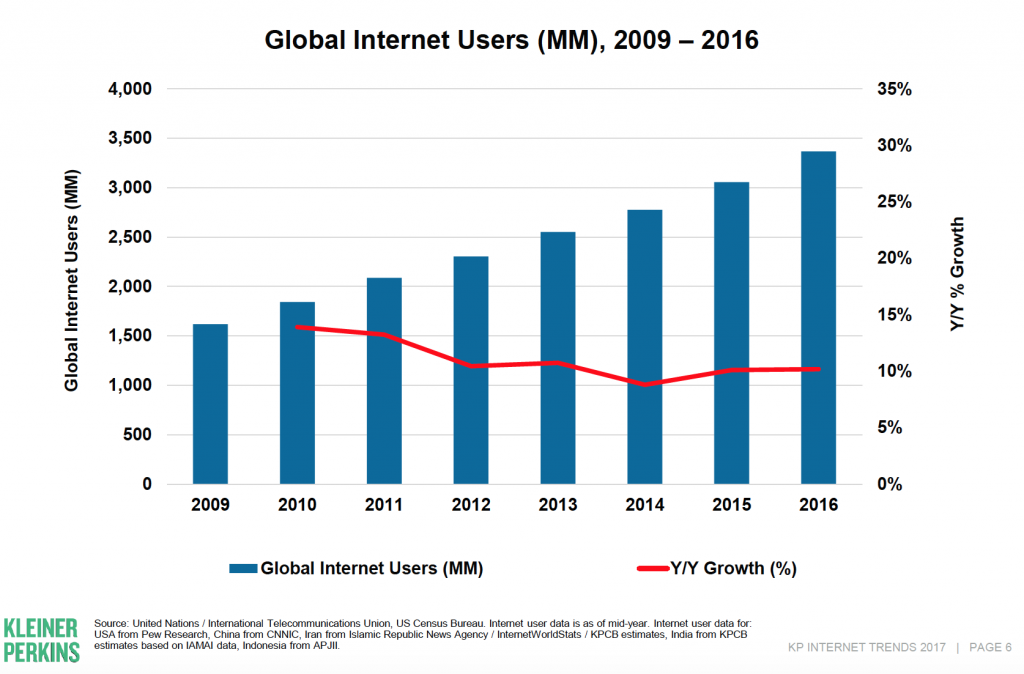
Smartphones are important for digital learning, because we need our students to be able to use our clever apps. Sales of new smartphones are approaching 1.5 billion each year. Growth is slowing rapidly, but remember that these are figures for new units; only the rich or demented change their phone every year. And despite the hype, Android rules the world:
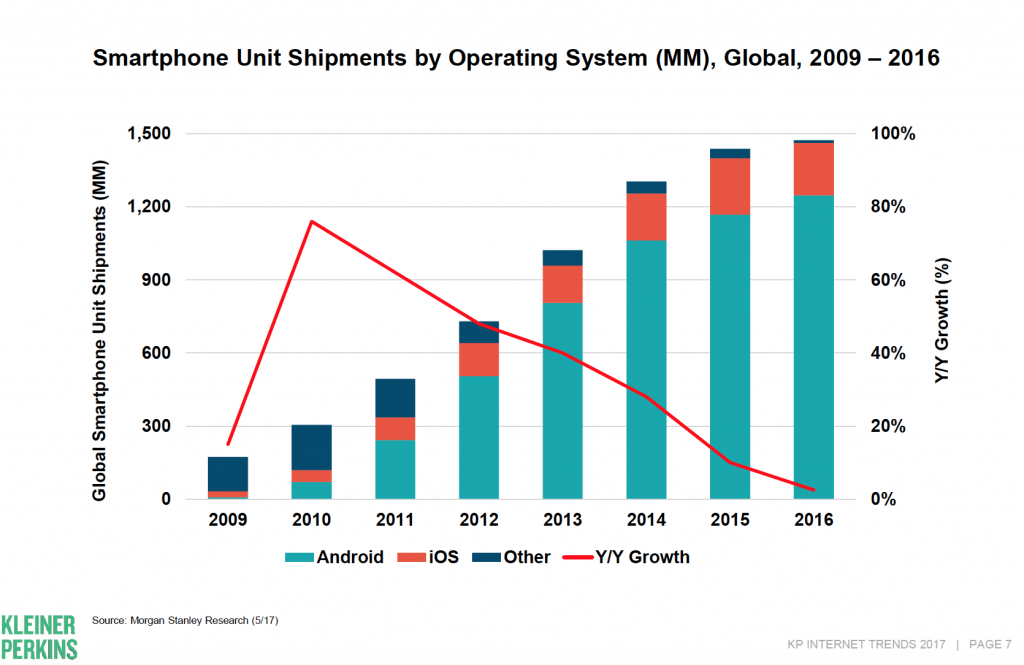
Taken together – and along with a good deal more data in Mary Meeker’s massive slide pack – this confirms what we know; the Internet is almost everywhere and sophisticated mobile access is the future. The nature of this access is also changing. One trend, particularly significant for digital learning, is that typing will follow the typewriter into oblivion. Machine learning has now taken voice recognition to the threshold for natural communication. This means that our students of the future will interact with teachers, and with each other, using natural language. Here’s the graph:
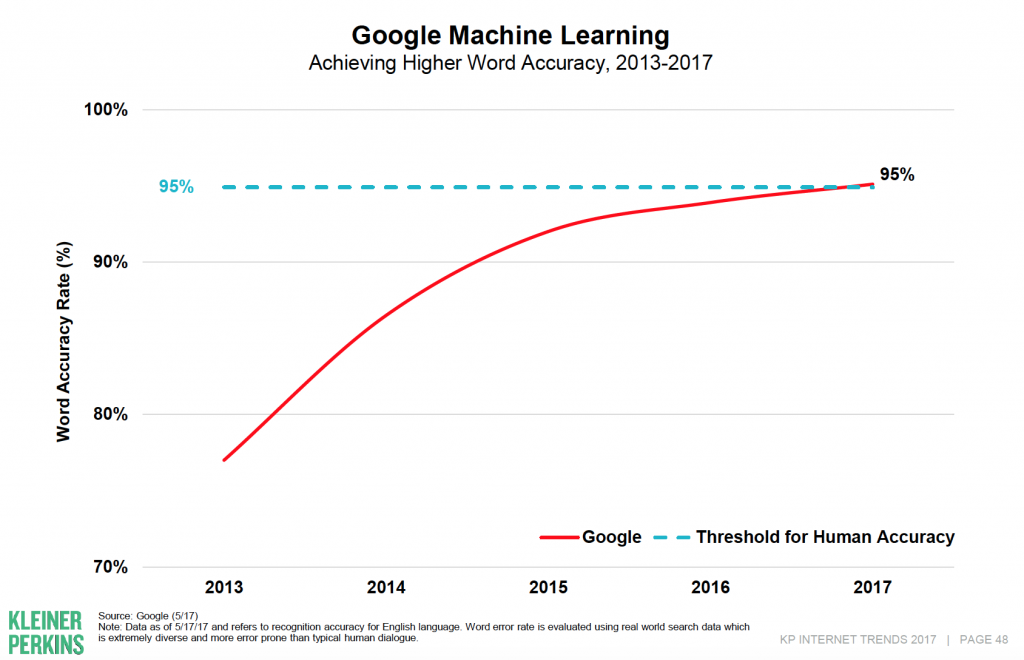
What are the more specific indicators for the future of digital learning?
Looking to the US as the leading edge of global trends, survey data shows that the average adult spends almost six hours every day engaged with digital media. This includes work and entertainment, and so it’s about one-third of a person’s waking hours; we are becoming cyborgs. At the same time, there’s a steady shift away from clunky keyboards and towards mobile access: look at the encroaching green bars in the graph:
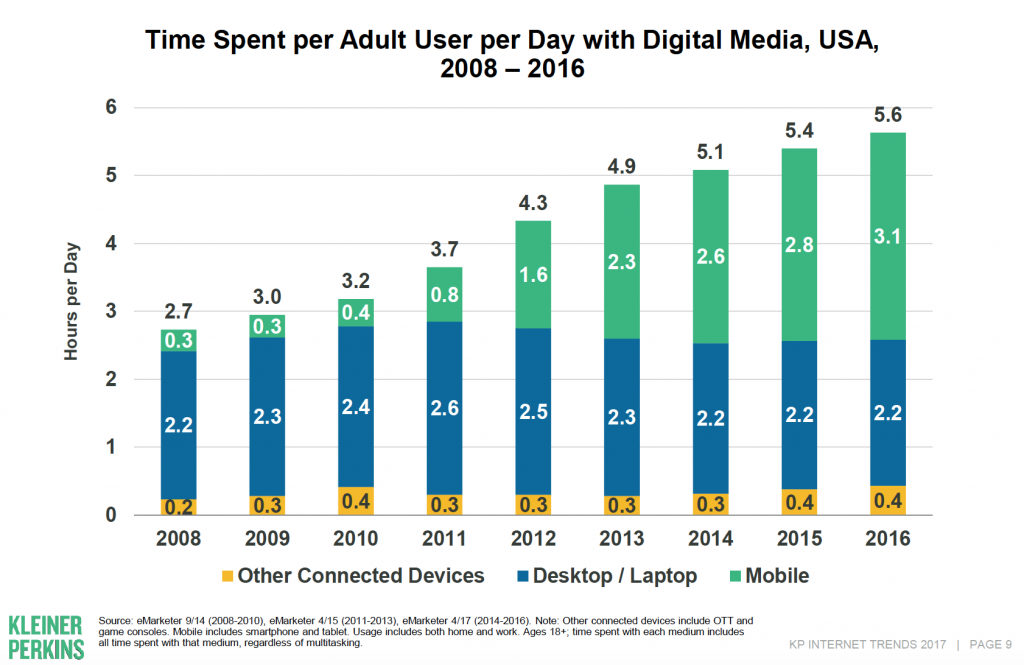
These trends tell us that digital platforms and media are the future of all forms of education provision, everywhere, whether fully online or in enabling contact delivery. Universities like Harvard and MIT understand this, which is why they are using fully online learning to transform their approach to fully residential learning. Universities that don’t understand this, and that do not adapt digital technologies to their specific missions, will be left behind. And this future will be mobile; all our students will want to access their courses anywhere, on convenient and intelligent mobile devices.
How will digital technologies affect the ways in which learning happens? The standout from Mary Meeker’s report is gamification. There are now some 2.6 billion gamers across the world, mostly immersed in collaborative play. Generation X has been “gamified since birth”, but online games attract all ages, with both preadolescents and over-50s holding their own against the adrenaline pumpers. The average age for gamers is 36, which matches the demographic of mid-career professionals enrolling for education and training courses:
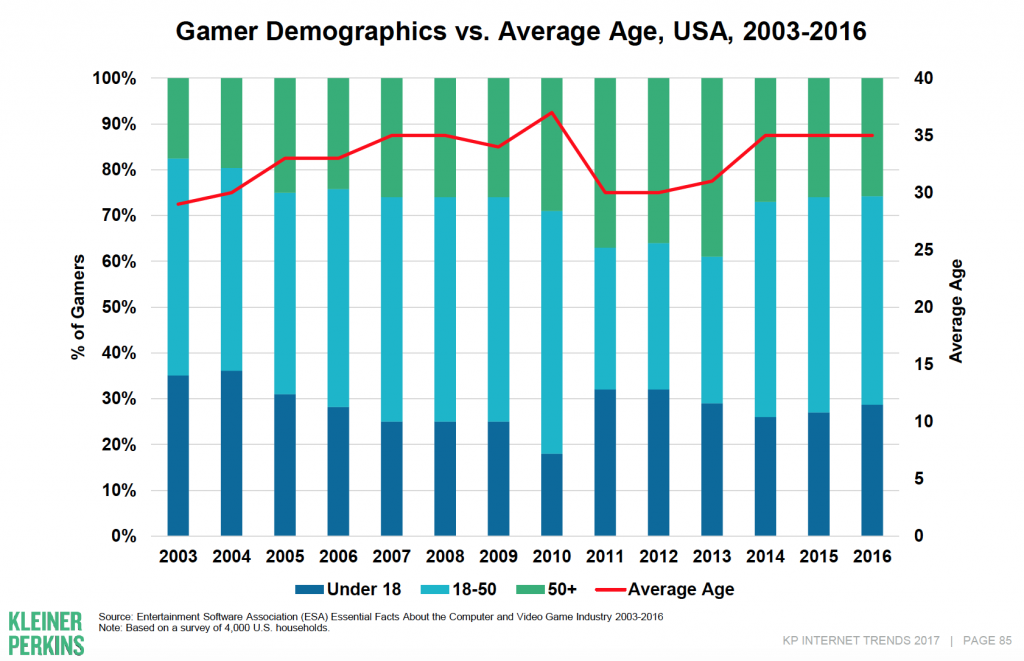
And these gamers are really, really busy. Blizzard Entertainment alone reports more than 40 million active users per month across its suite of collaborative games; this is more than twice the number of all college and university students in the USA:
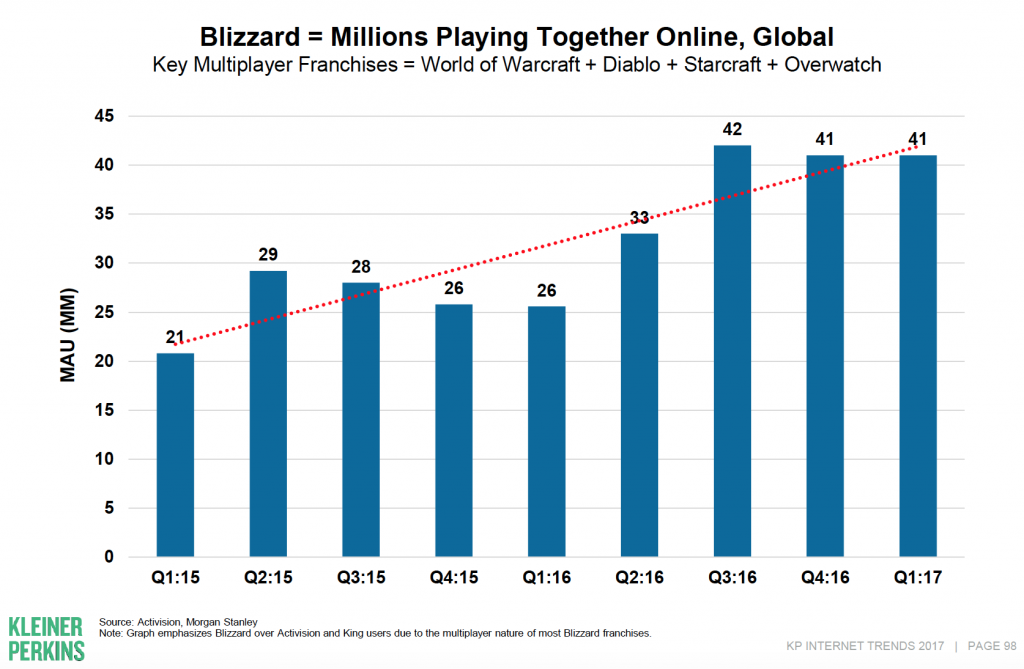
In her report, Mary Meeker makes the point that gaming is learning from doing, failing and repeating, which she captures in this nice gaming lifecycle diagram:
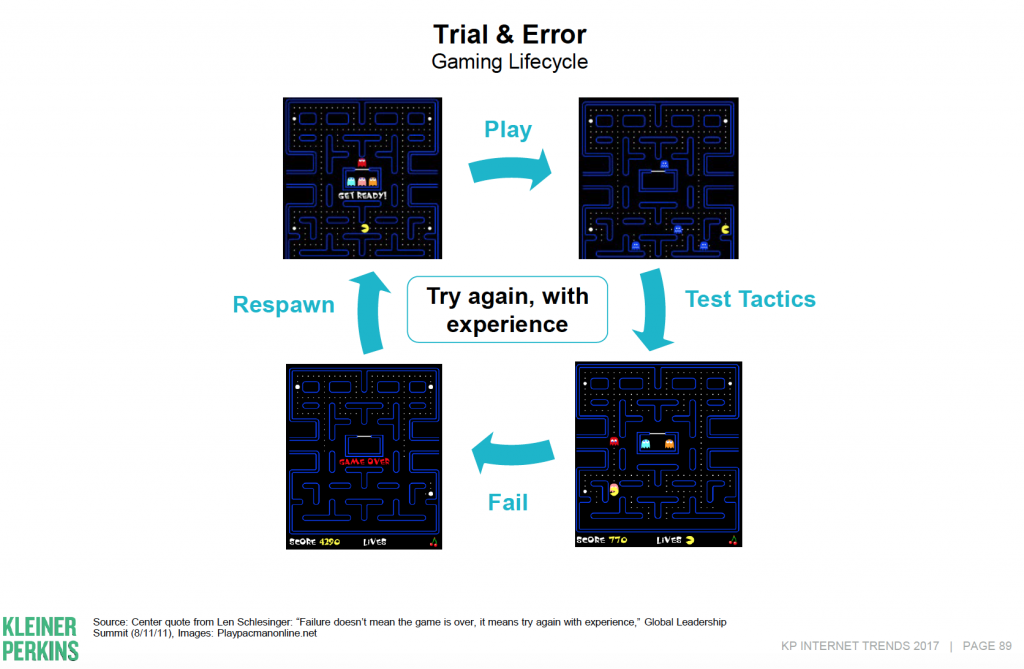
When I saw this, I immediately thought of Kolb’s classic experiential learning cycle, which has been underpinning enlightened curriculum development since David Kolb published “Experiential Learning: Experience as the Source of Learning” back in 1984.
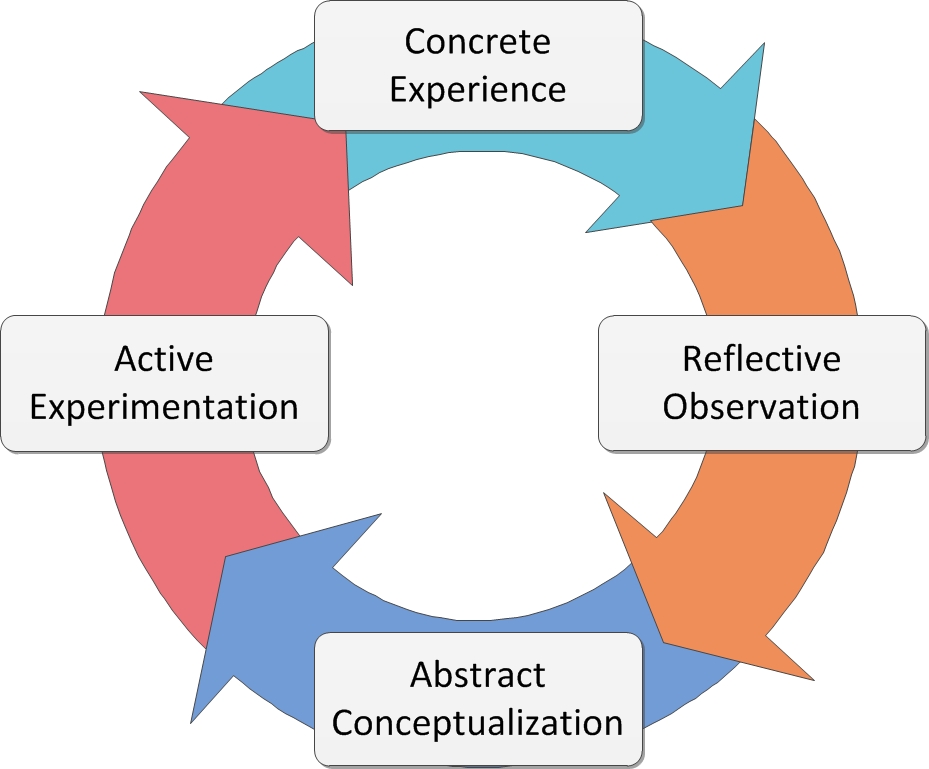
I’m sure I don’t have to make the obvious point. And gaming is already central in a range of professional training contexts:
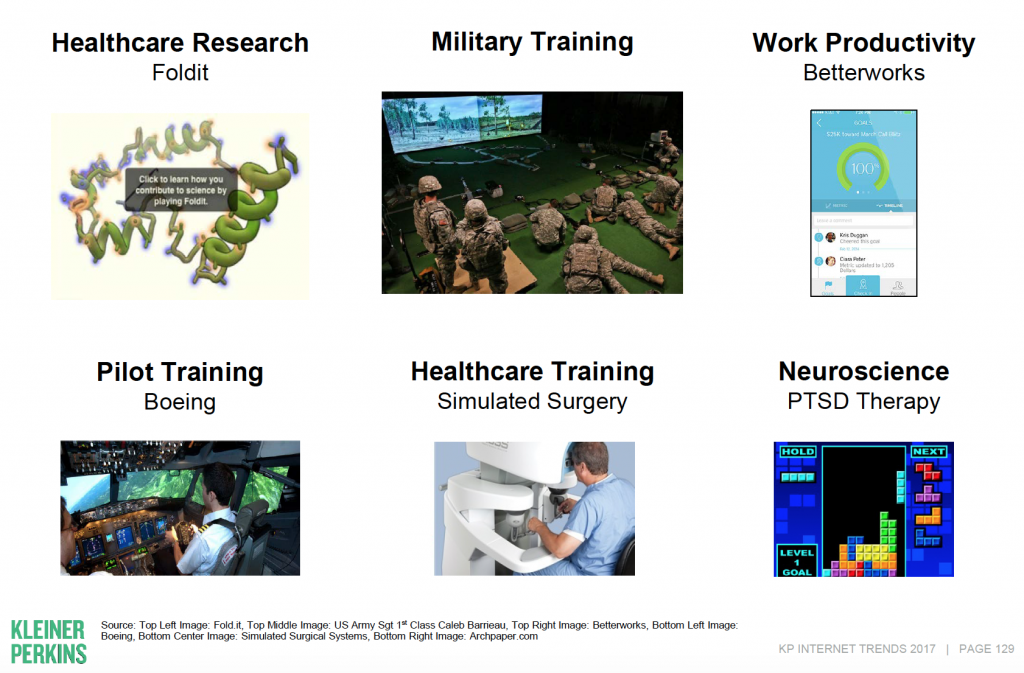
So our students of the future will be connected, peripatetic gamers. My third take-away from Mary Meeker’s slide deck is that the customer experience matters. This is obvious but a lot of universities still don’t get it; teaching and students are an inconvenience that gets in the way of research.
The 2017 trends report shows some of the ways in which online expectations are evolving. There is a sharp rise in personalised interaction. Here is the growth in one-to-one conversations using the Intercom platform:
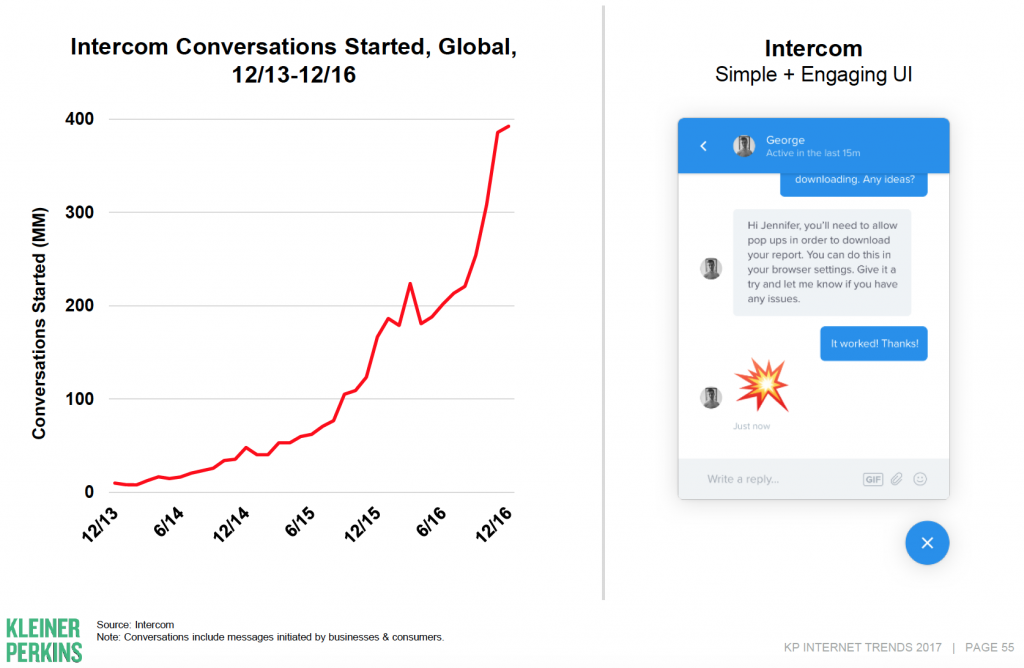
And we do not like our digital engagement to be interrupted by invasive advertising, as the sharp rise in the use of adblocking facilities shows, particularly for mobile devices:
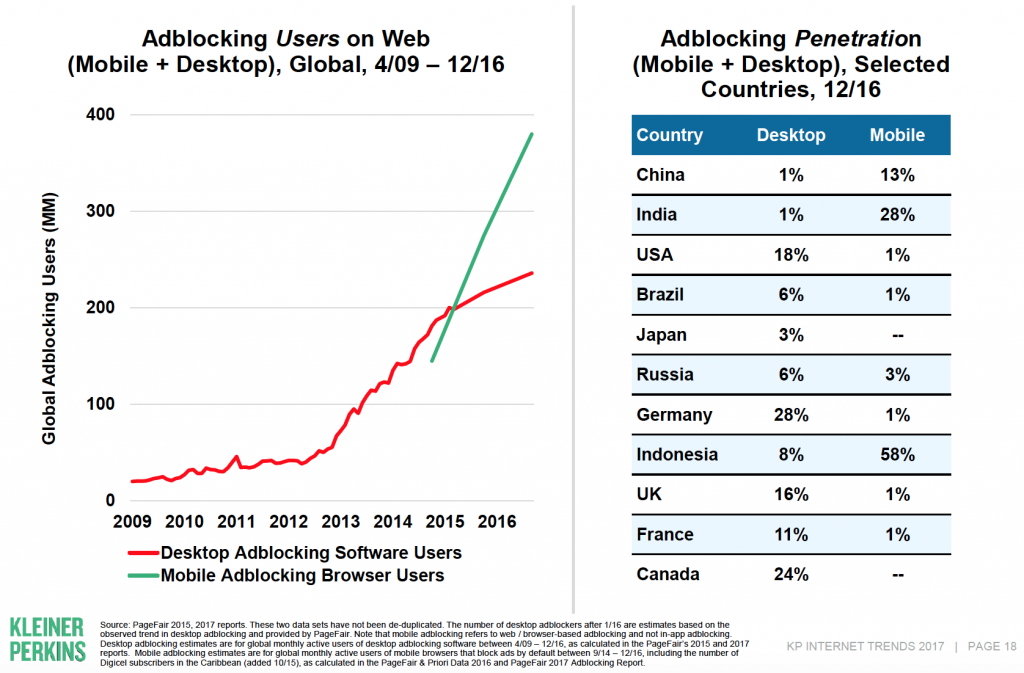
Personalised support is crucial. Asked what their priorities are for improving CX, faster online support comes out as the clear winner, while bad service is punished.
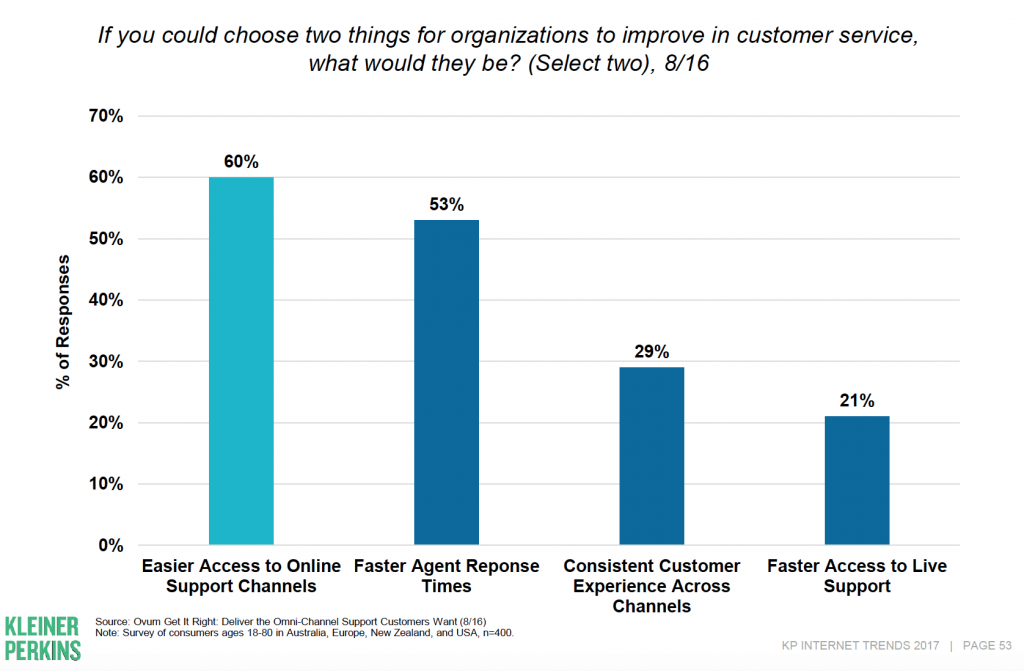
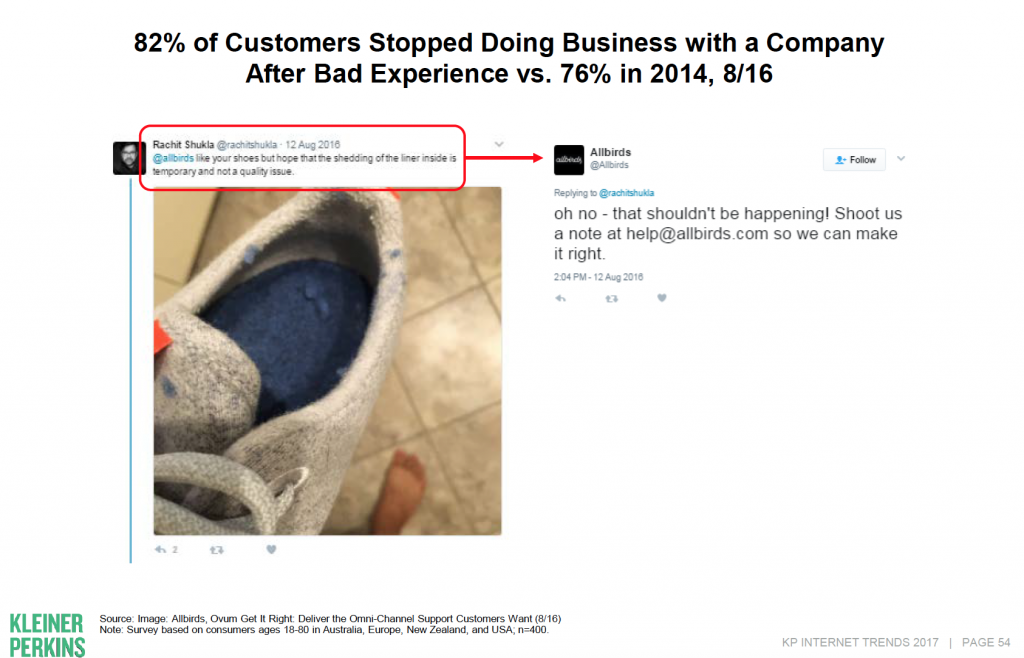
More than 80% of online customers report that they have stopped doing business with a company after a bad experience. As increasing numbers of universities get online, with a growing diversity of options for learners, universities that provide a poor student experience will lose enrollments and their primary source of revenue.
Quality matters.
Source:
Mary Meeker, Internet Trends Report, 2017. Made available by Kleiner Perkins at http://www.kpcb.com/internet-trends